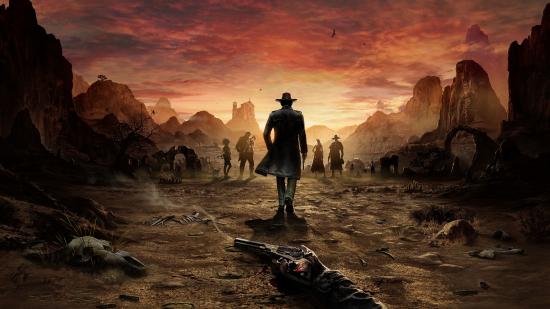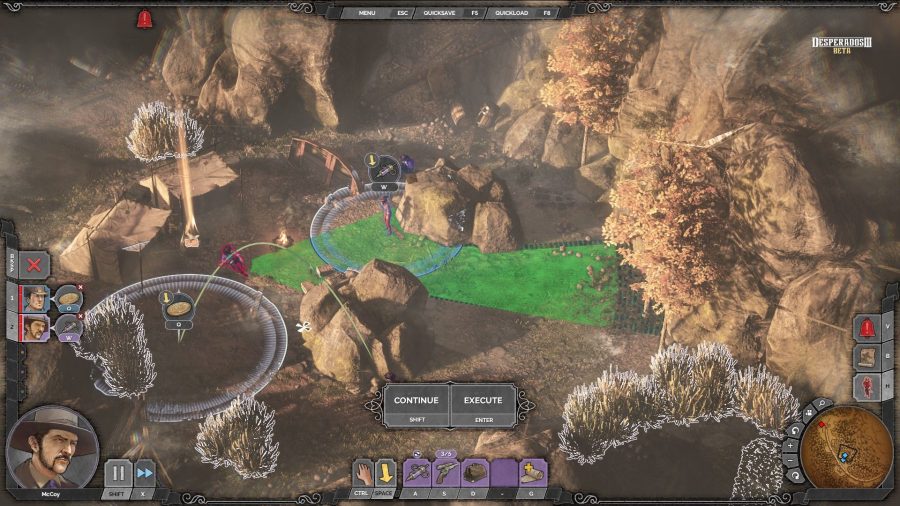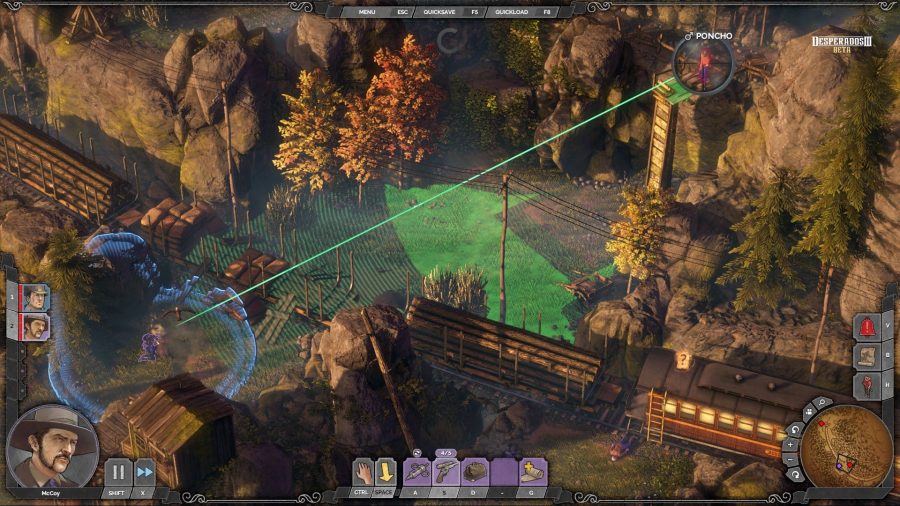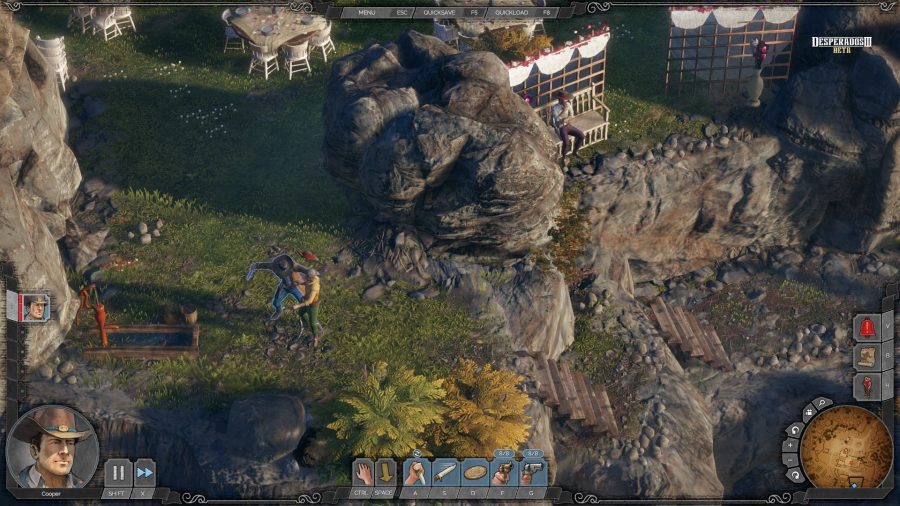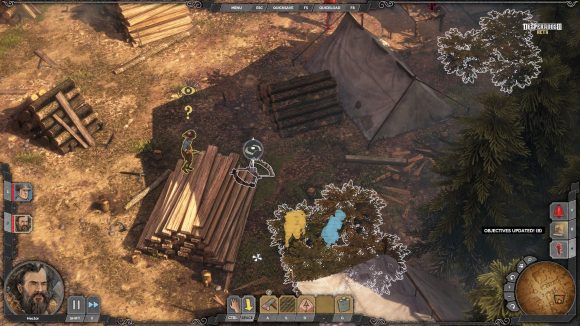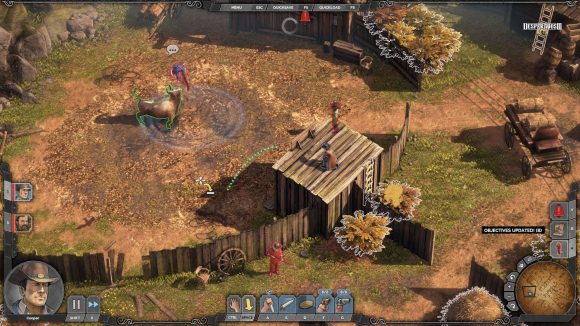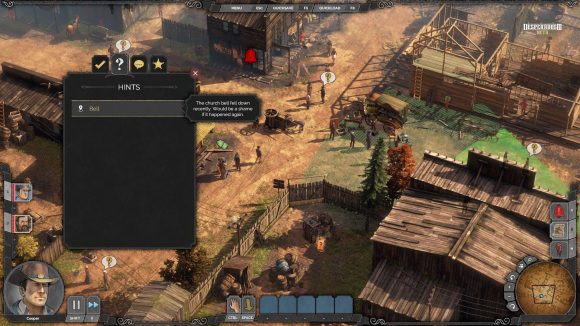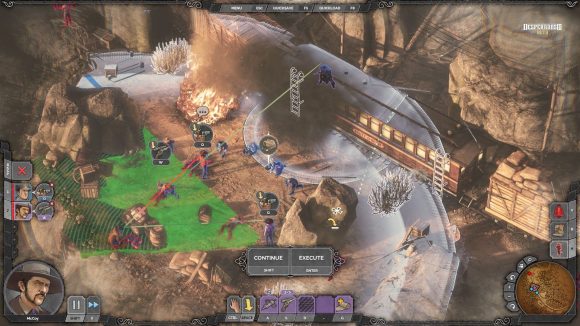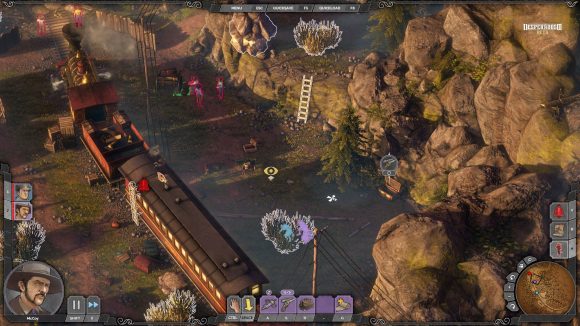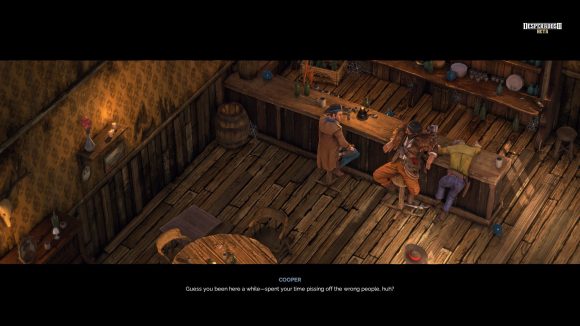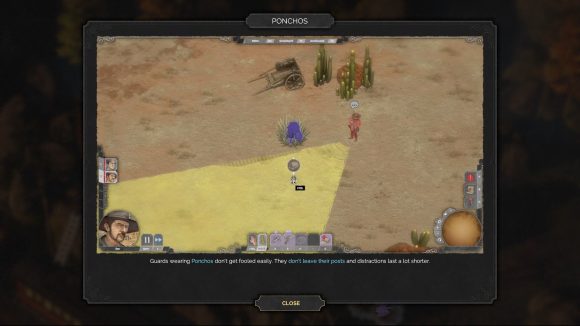There’s a fine line between ‘inspired by’ and ‘openly derivative of’, and when a game stumbles into the latter, it normally takes the jam right out of my doughnut. Normally.
Desperados III is openly derivative of the 1998 classic Commandos: Behind Enemy Lines, a game I loved so much that my friends and I invented a real-life version in which we used a torch to represent enemy view-cones and took turns sneaking around my living room knifing each other. But after a few hours with a preview build of Desperados III, I don’t resent its open imitation of one of my favourite old PC games at all. In fact, I’m delighted it exists.
There are several reasons for this. One is that Desperados has always been a Commandos clone since its debut in 2001, when Commandos was at the peak of its popularity. Another is that without consciously realising it I’ve wanted to play something very, very like Commandos ever since the series died an ignominious death with 2003’s Commandos 3: Destination Berlin (welcome though the Commandos 2 remaster is, it’s nothing new). The most important reason, however, is that Desperados III isn’t just a Commandos clone. It’s a thoughtful, modern evolution. It might even be a better Commandos game than any we ever actually got.
The Showdown feature is the most obvious example of this. With a press of the ‘shift’ key you can pause the game and queue up commands for several characters, then execute them simultaneously on a single button press. This enables you to solve puzzles more complex than Commandos could even present.

For example: two guards are watching each other. Returning character Dr McCoy (not the X-Man) has an expensive-looking medical bag with a gas trap in it. When thrown into a guard’s sightline, this will lure said guard out of position every time like a shiny ten-pound note, and then knock them out when they open it, like a shiny ten-pound note that can also punch you.
Annoyingly, McCoy can’t throw it far enough to lure one guard out of eyeshot of his mate, but he can draw him away for long enough for series protagonist Cooper to knife said mate from behind. I have McCoy throw the bag, then use Showdown mode to time both his and Cooper’s takedowns such that both henchmen are killed in the brief window where they can’t perceive each other. This is immensely satisfying, like a Ghost Recon Wildlands sync-shot.
There are also a number of quality-of-life features that strip out the fiddliness and frustration that I can only remember in Commandos by their absence in Desperados III. You can pull up an enemy’s view-cone on a simple right-click rather than bother with hotkeys or clicking the eyeball in the top-right (as 11-year old me did, like a mug, for far too long). You can hold RMB to mark either a guard or a point on the map, and if any other guard can see said mark, they will be indicated with a yellow tracer. This is a great tool for planning your next kill or a route through a heavily guarded area. If you’ve got a guard’s patrol route figured out and you’re just waiting for the window to strike, you can speed up time to get there, rather than simply wait.
The enlightened decision to embrace the reality of ‘save-scumming’ is the final bit of grease that keeps me frictionlessly engaged in the fun of Desperados III. Quicksaves are near-instant and – obviously – mapped to a single hotkey, as are quickloads. Desperados III also sensibly rotates three quicksave slots, so if you find yourself having followed a losing strategy too far, you can backtrack several steps.
The game will even remind you to quicksave with an on-screen prompt if you haven’t done so for 60 seconds (frankly, this gets a little annoying – I hope it goes away, or that there is an option to make it do so, after the habit has had a chance to form). As a slick tutorial makes clear, learning through failure is a core part of the game’s design, so frequent save-scumming is intended – I would happily see more strategy and tactics games embrace this trend.
In light of all this, and of Commandos’ lamentable absence, Desperados’ naked imitation of so much else about it is charmingly nostalgic rather than teeth-gratingly derivative. From presentation to premise, this is the modern Commandos game that I only realise I’ve been missing as I play it. I’m smiling from the first isometric glimpse of the distinctively crisp graphics and smiling harder as I bring up a familiar two-part green view-cone, sweeping the level as if people really do move their heads from side to side all day long.
Like Commandos, this is a squad tactics game with a heavy emphasis on stealth. You have a group of characters with various abilities, both passive – Hector has the most health and can carry two bodies at once, while Cooper is the most agile, able to swim and climb more than just ladders – and active.
Active abilities are your toolbox for solving the game’s stealth-action puzzles. Cooper is a versatile killing machine, with two pistols (which he can fire simultaneously via Showdown) and a rare ability to kill quietly at range with his throwing knife. Besides his lure, McCoy can use his Colt buntline to kill at extreme ranges – again, it functions in exactly the same way as Duke’s sniper rifle from Commandos, right down to its distinctive viewfinder.
A less obvious thing to crib is Commandos’ quirky humour. Tossing noisy items to divert a guard’s attention is a staple device of the stealth genre, but in Desperados III the ability has an inventive and amusing secondary use: toss a coin at your horse (not Witcher) and it’ll kick to its rear, leaving any passing henchman with a bad headache and horseshoe-shaped recess on their face.
There are self-aware winks to the genre’s ‘gamey-ness’: Hector’s comically large bear trap is described as “surprisingly stealthy” to hurry you past the fact that guards won’t notice it lying right in front of them, even though the big trapper has to wear it across his back. A class of diligent guards who distract less easily are indicated as such by simply wearing ponchos – why would a poncho-wearing guard be more diligent? McCoy’s brush-off – “trust me, I know the type” – is the only explanation given.
The whole thing is tied together with a stylish, suitably twangy Western score; a tighter focus on narrative than Commandos ever had, telling a character-driven story with plenty of in-engine cutscenes; and a delightful attention to detail. The game is full of lovely little touches that raise smiles of appreciation, such as when I spy a lizard skittering across a sunbaked street. I love stuff like this. It’s what lets you know a game has been made by people who give a shit.
Those people would be Mimimi Productions, who most recently gave us Shadow Tactics: Blades of the Shogun. Released at the end of 2016, that was probably the latest game in this ‘Commandos-like’ subgenre of stealth tactics. On that and this evidence, a wise choice by THQ Nordic to revive Desperados.
Having missed the earlier games in the series, I came into Desperados III with no real expectations. I’m sure that will have helped my feeling of pleasant surprise, but I doubt any fan of the genre, or anyone who misses Commandos, will be disappointed. To say Desperados III wears its influences on its sleeve is like saying Liberace liked clothes, but those influences have been sorely missed, and Desperados builds on them with thought and care. I’m only part-way through the third mission, but so far, Desperados III has earned the right to sit on Commandos’ long-empty throne.
